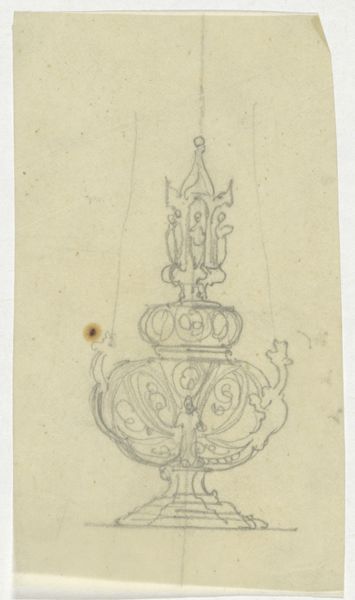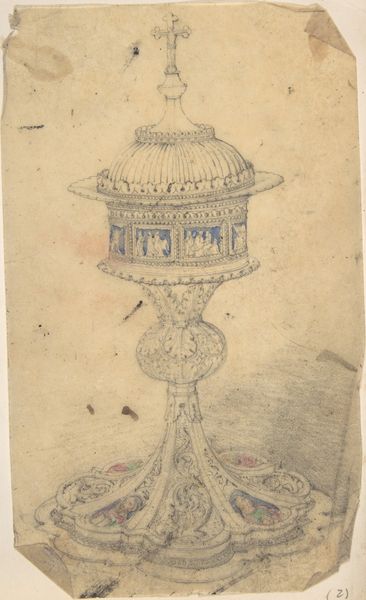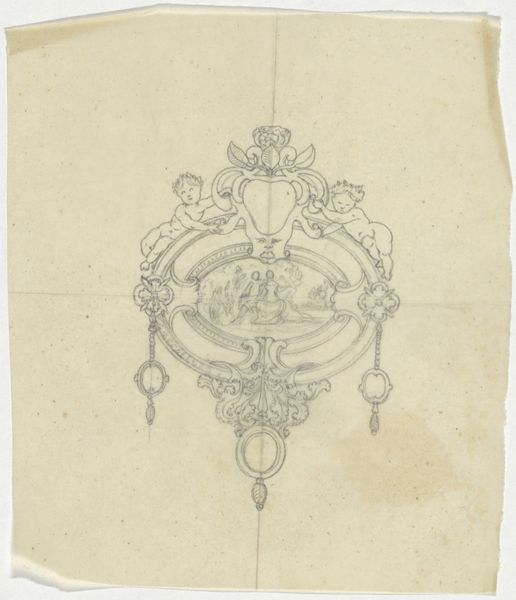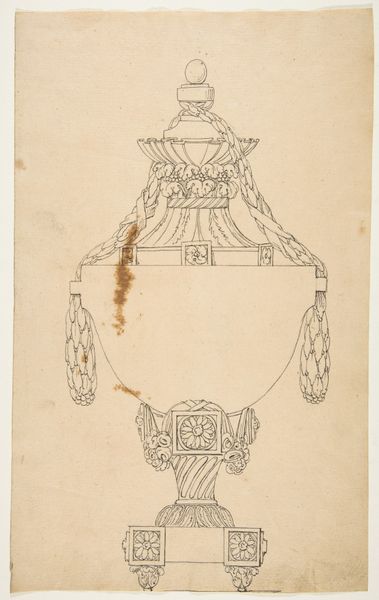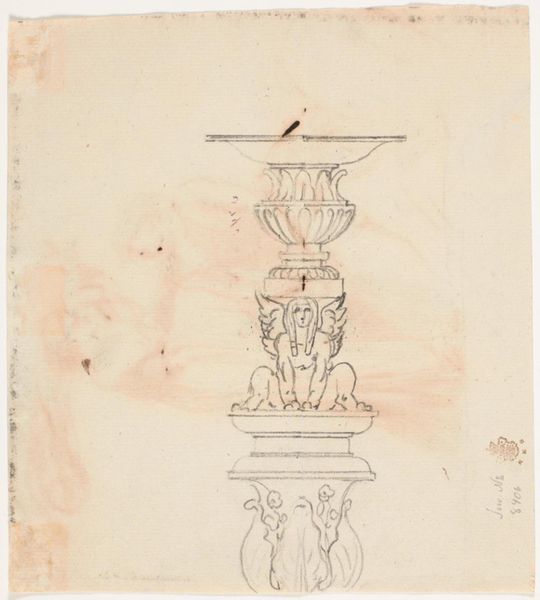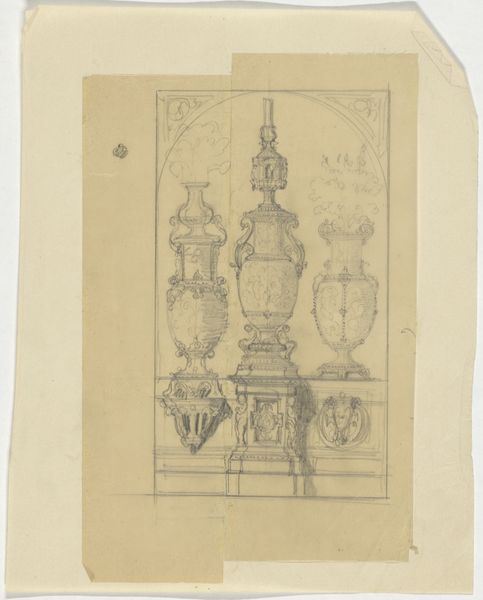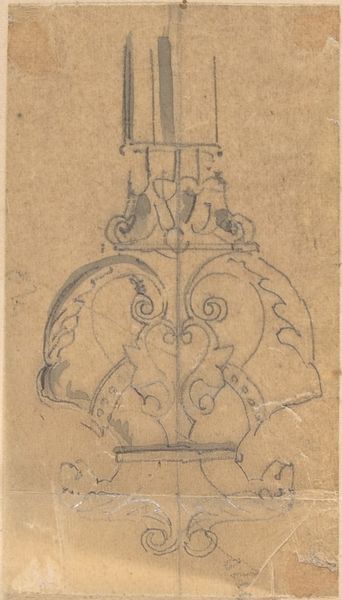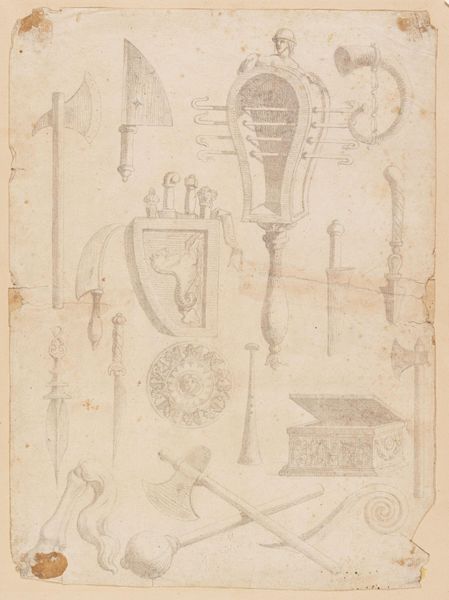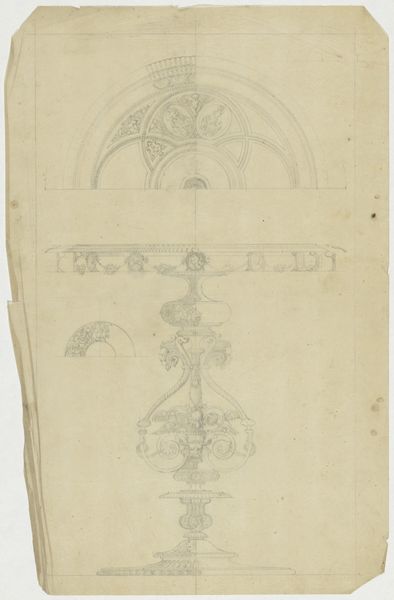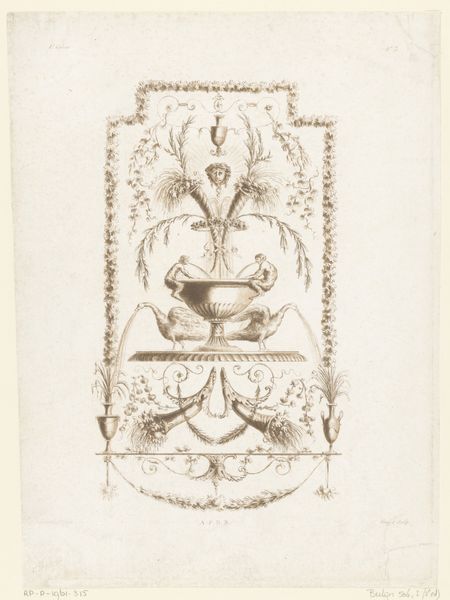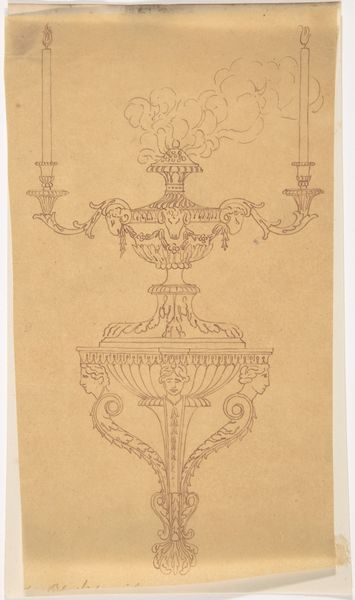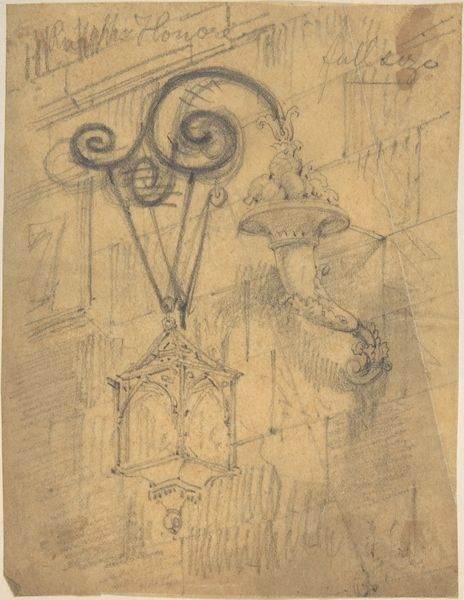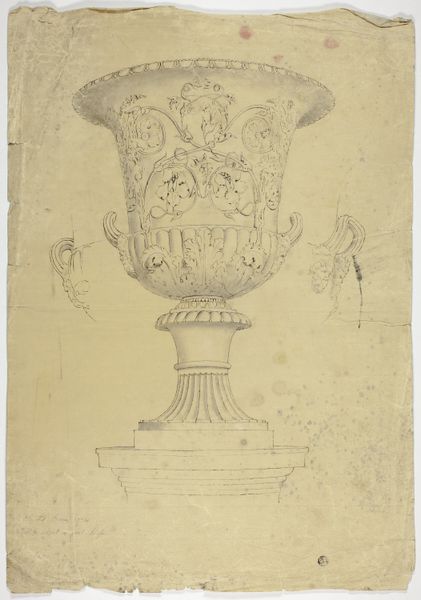
drawing, print, pencil, silver-point
#
drawing
# print
#
personal sketchbook
#
ink drawing experimentation
#
coloured pencil
#
pencil
#
silver-point
#
academic-art
Dimensions: sheet: 6 7/16 x 4 5/16 in. (16.3 x 11 cm)
Copyright: Public Domain
Editor: Here we have an anonymous drawing from around 1850 to 1900, titled "Chalice with Enamel Ornament", currently residing at the Met. It’s a mix of pencil, colored pencil, silverpoint, and other media. I'm struck by the way the artist renders this object. It feels so deliberate. How would you interpret this work? Curator: Given the period, the level of detail and the presence of figural enamelwork, this seems less a spontaneous expression and more likely a study, perhaps intended as a preparatory design. What societal factors during the 19th century may have influenced its creation, considering the era's revivalist movements and the church's public role? Editor: That's interesting! A design for a chalice reflecting, as you say, the church's public role during that time? Curator: Precisely. Remember that the 19th century saw intense debates over religious art and its proper function. Chalices, laden with iconography, became symbols in a visual dialogue regarding faith and power. I wonder if it might have been part of a larger movement to revive religious crafts or re-establish particular traditions? Do you notice any historical references in its decoration? Editor: I see small oval portrait in the middle section. Were such decorations common during the late 19th century for chalices? Curator: Those could allude to saints or prominent religious figures, situating this piece within a specific theological framework. Enamels allowed for colour and miniature depiction and became popular in liturgical art due to technical advancement. It reflects broader Victorian tendencies towards ornate, symbolic objects as embodiments of belief. Editor: So the medium itself says something about that historical moment. Thank you! Curator: Absolutely. It’s a conversation starter, bridging aesthetic skill and public-facing declarations of faith through object design. Considering this enriches our perception greatly!
Comments
No comments
Be the first to comment and join the conversation on the ultimate creative platform.
